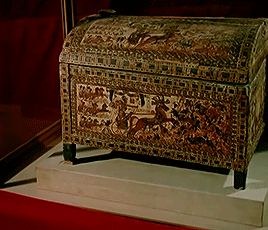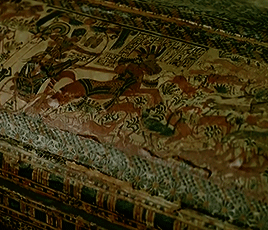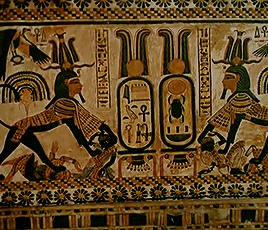ancientegyptdaily:Painted chest of Tuankhamun: One of the most intricately decorated objects in the
ancientegyptdaily:Painted chest of Tuankhamun: One of the most intricately decorated objects in the tomb, this wooden chest, which was found in the Antechamber, illustrates the innovation of the frenzied battle. A fierce confrontation takes place on both sides of the box; on one side the king in his chariot fighting against the Asiatics. On the other side the king battles against the Nubians. Scenes such as these were the apparent influence for the artists who composed the military reliefs for the pharaohs of the Nineteenth Dynasty, where the enemy is also frequently depicted as a confused mass without the traditional registers. The absence of these groundlines make possible the chaotic disarray of the enemy. Chaos and disorder were anathema to the ancient Egyptian, since they represented the opposites of ma’at, the balance and harmony upon which the entire culture was based. these battle scenes, therefore, appear to have symbolic significance.The curved lid is divided into two sections, each of which has a horizontal panel portraying the king pursuing wild animals. The smaller sides each have two representations of Tutankhamun as a sphinx treading upon his enemies.On the long horizontal panel, the king shoots his arrows into the fray. Behind him are three registers of subordinate personnel. The inscription before Tutankhamun refers to him as: “The good god, the Son of Amun, the Valiant one, without his equal, A Possessor of strength who tramples hundreds of thousands, who makes them into a pile of corpses.” Both his throne name, Nebkheperura, and his personal name, Tutankhamun, appearing under the designation, the “good god, Son of Ra”, are written in front of him. [X] -- source link
Tumblr Blog : ancientegyptdaily.tumblr.com
#ancient egypt#egyptology#archaeology#tutankhamun



